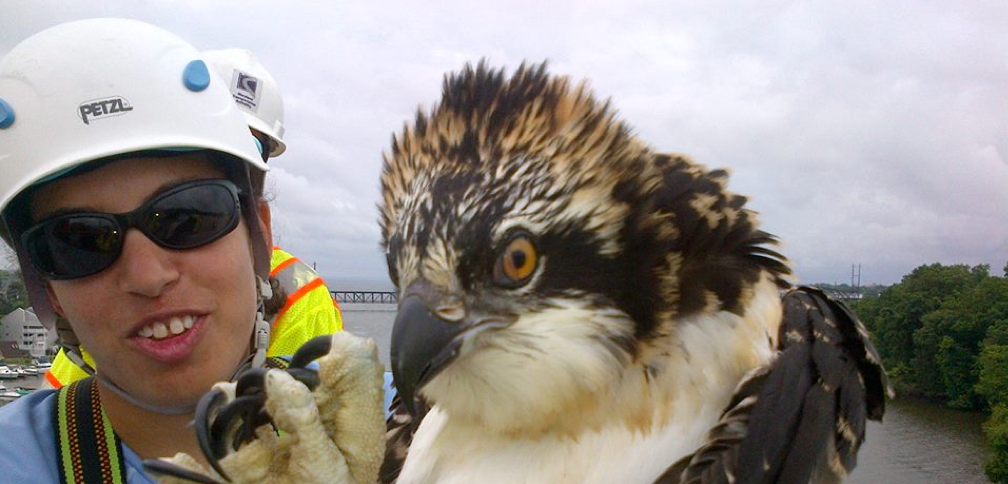4 July 2013
Osprey Research
Posted by Dan Satterfield
Spotted this pic and story on the Maryland DOT Facebook page. Worth sharing!
CHESAPEAKE BAY OSPREY STUDY – Rebecca Lazarus of the Patuxent Wildlife Research Center pauses Monday while monitoring an osprey nestling (approximately 45-50 days old) at the Thomas J. Hatem Memorial Bridge (US 40).
A team of Patuxent scientists are currently monitoring four active nests at the Hatem Bridge and four active nests at the Millard Tydings Memorial Bridge (I-95). The scientists are in their third year of making “nest calls” to check on the health of a growing osprey population. The majestic birds have rebounded across the Bay since the 1970s banning of DDT and other pesticides blamed for hurting raptor reproduction. Ospreys are excellent indicators of Chesapeake Bay health because they spend great amounts of time on the water as well as subsisting on fish.
However, as ospreys spread through many bay tributaries, there are relatively few nesting on Back River and in heavily urbanized waterways such as Baltimore’s Inner Harbor and Washington’s Anacostia River. The study is investigating whether past and continuing pollution is affecting osprey health and reproduction. The study also checks nests in the Susquehanna, Potomac, James and Elizabeth rivers, as well as in the Baltimore harbor. Researchers monitor nests to see how many eggs are laid and hatched. They also take blood samples, and an occasional egg, to check for chemical contaminants.
Researchers estimate there are between 6,000 and 8,000 nesting pairs of osprey across the Chesapeake Bay. The birds mate for life and return to the same nest each March after wintering in Central and South America.
Photo by MDTA Maintenance Supervisor John Monk



 Dan Satterfield has worked as an on air meteorologist for 32 years in Oklahoma, Florida and Alabama. Forecasting weather is Dan's job, but all of Earth Science is his passion. This journal is where Dan writes about things he has too little time for on air. Dan blogs about peer-reviewed Earth science for Junior High level audiences and up.
Dan Satterfield has worked as an on air meteorologist for 32 years in Oklahoma, Florida and Alabama. Forecasting weather is Dan's job, but all of Earth Science is his passion. This journal is where Dan writes about things he has too little time for on air. Dan blogs about peer-reviewed Earth science for Junior High level audiences and up.